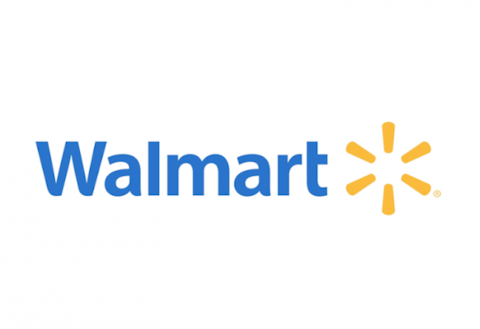It’s no shock that the nation’s largest retailer, Wal-Mart Stores, Inc. (NYSE:WMT), stands as a bellwether for the health of the domestic consumer.
Wal-Mart Stores, Inc. (NYSE:WMT) is a retailing juggernaut that rakes in more than $460 billion in annual sales, the majority of which are in the U.S. When Wal-Mart reports, the market takes notice, and judging by the market reaction upon receiving Wal-Mart’s second quarter earnings, the alarm bells are ringing.
Wal-Mart Stores, Inc. (NYSE:WMT)’s offers numerous clues as to how the American consumer is doing. Here’s what investors need to pay attention to, and why storm clouds may be gathering above the U.S. consumer.

Down for the count
Investor jitters sent Wal-Mart Stores, Inc. (NYSE:WMT) stock down sharply on the announcement, likely stemming from the fact that comparable sales (which measures sales at locations open at least one year) fell 0.3%. Diluted earnings per share, however, rose 5% in the quarter.
Moreover, Wal-Mart Stores, Inc. (NYSE:WMT) reduced its full-year earnings guidance range by ten cents on each side. Management now expects full-year EPS of $5.10 per share to $5.30 per share.
This is a troubling sign, not just for Wal-Mart Stores, Inc. (NYSE:WMT), but for the state of its core customer as well, and Wal-Mart’s poor results are notable in light of the success of fellow discount retailer Costco Wholesale Corporation (NASDAQ:COST).
Costco Wholesale Corporation (NASDAQ:COST) is doing very well to start the year, reporting 6% growth in comparable sales over the first nine months of the year. In addition, diluted earnings per share are up 29% through the first three quarters, year over year.
Of course, it’s worth noting that Costco Wholesale Corporation (NASDAQ:COST) actually holds a higher-income customer base than Wal-Mart, and for the most part Costco Wholesale Corporation (NASDAQ:COST)’s customers continue to do well.
Separately, there are even companies closer to Wal-Mart’s low-income customer base that are succeeding, indicating this may be a Wal-Mart specific issue. For instance, dollar stores cater to many of the same customers as Wal-Mart. Dollar General Corp. (NYSE:DG) is one such dollar chain that has performed strongly in recent periods.
Dollar General Corp. (NYSE:DG) racked up record sales, operating profit, and net income for fiscal 2012. Even better, the company’s success continued into the current fiscal year, with adjusted EPS rising 13% on the back of 8.5% growth in net sales.
At that time, Dollar General Corp. (NYSE:DG) also raised its full-year outlook, noting particular strength among its consumables categories. For 2013, management expects same-store sales growth of 4% to 5%.
Even Dollar General Corp. (NYSE:DG) was relatively cautious about the outlook for the low-end customer, noting that its core customers’ dependence on low pricing was as strong as ever.
Between a rock and a hard place
If the question is what Wal-Mart is telling us about the state of its consumer base, the answer is: nothing good.
Wal-Mart, the largest retailer in the United States by far, counts 150 million consumers among its shoppers, and the struggles facing those consumers are abundantly clear.
Wal-Mart is getting squeezed by competitors poaching customers on each side of the spectrum.
On the higher end as compared to Wal-Mart, Costco Wholesale Corporation (NASDAQ:COST) is doing very well. Despite their similar natures, Costco’s average customer has a much higher income than Wal-Mart’s. Costco’s shoppers are doing well enough to maintain their spending levels, and do not feel the need to scale down.
On the other end is the low-end consumer, many of whom are actually scaling down from Wal-Mart to the nation’s many dollar store chains.
This dynamic helps to explain Costco Wholesale Corporation (NASDAQ:COST)’s continued success and the rising popularity of dollar stores, including Dollar General Corp. (NYSE:DG), in conjunction with Wal-Mart’s struggles.
A pivotal time ahead
On the horizon for all retailers, including Wal-Mart, are the crucial back-to-school and holiday shopping seasons.
There are more than enough headwinds to suggest these sales seasons could disappoint, including tepid job growth and higher taxes.
If recent results are any precedent, Wal-Mart could continue to suffer and its stock price may be stuck in the doldrums for the time being.
From a long-term perspective, though, I still think Wal-Mart is a good bet. For better or worse, Wal-Mart has a deeply entrenched customer base. It’s not as if Wal-Mart suddenly lost the execution abilities that made it the biggest retailer in the U.S.
And, investors are treated to one of the most shareholder-friendly companies in existence. Wal-Mart returned $3.4 billion to shareholders in dividends and share buybacks in the second quarter alone. The company has a long track record of sharing its success: Wal-Mart recently increased its dividend by 18%, and has increased its payout every year since the first declared dividend in 1974.
Wal-Mart will remain strongly profitable for years to come and will continue to reward its shareholders with an above-average dividend yield. If you’re only interested in going where the growth is, however, in the current environment you’d be wise to favor Costco or Dollar General instead.
The article What Is Wal-Mart Signaling About the Health of the U.S. Consumer? originally appeared on Fool.com and is written by Robert Ciura.
Robert Ciura has no position in any stocks mentioned. The Motley Fool recommends Costco Wholesale. The Motley Fool owns shares of Costco Wholesale.
Copyright © 1995 – 2013 The Motley Fool, LLC. All rights reserved. The Motley Fool has a disclosure policy.




